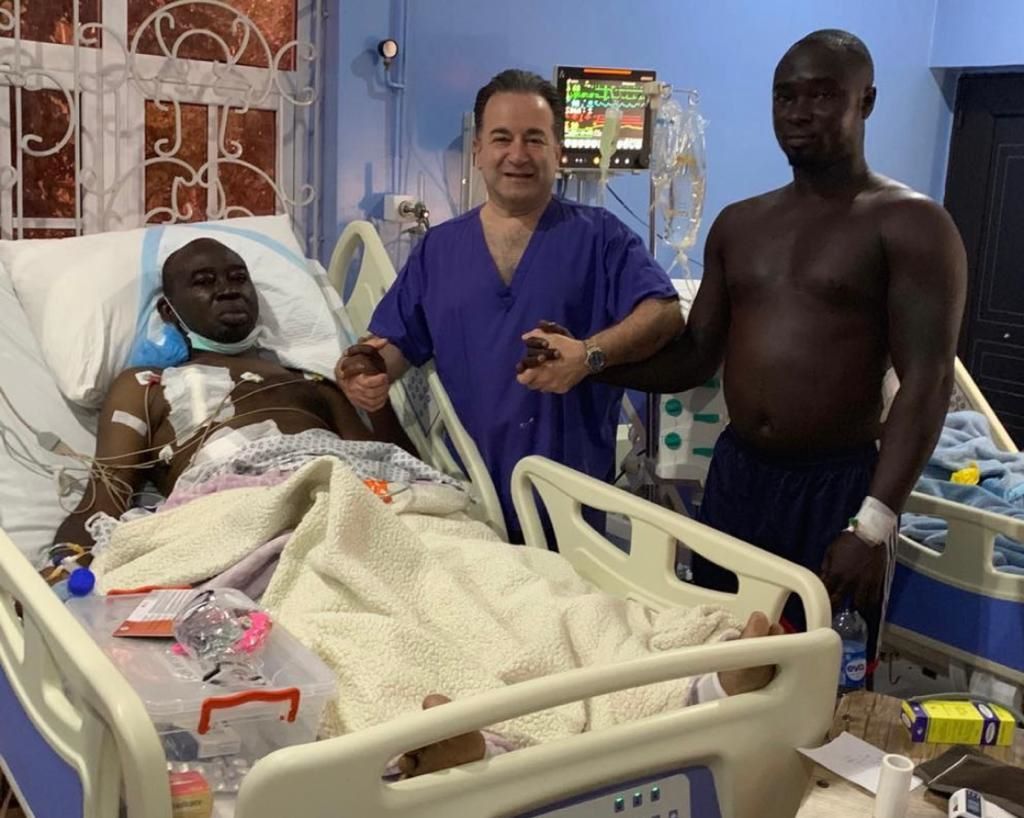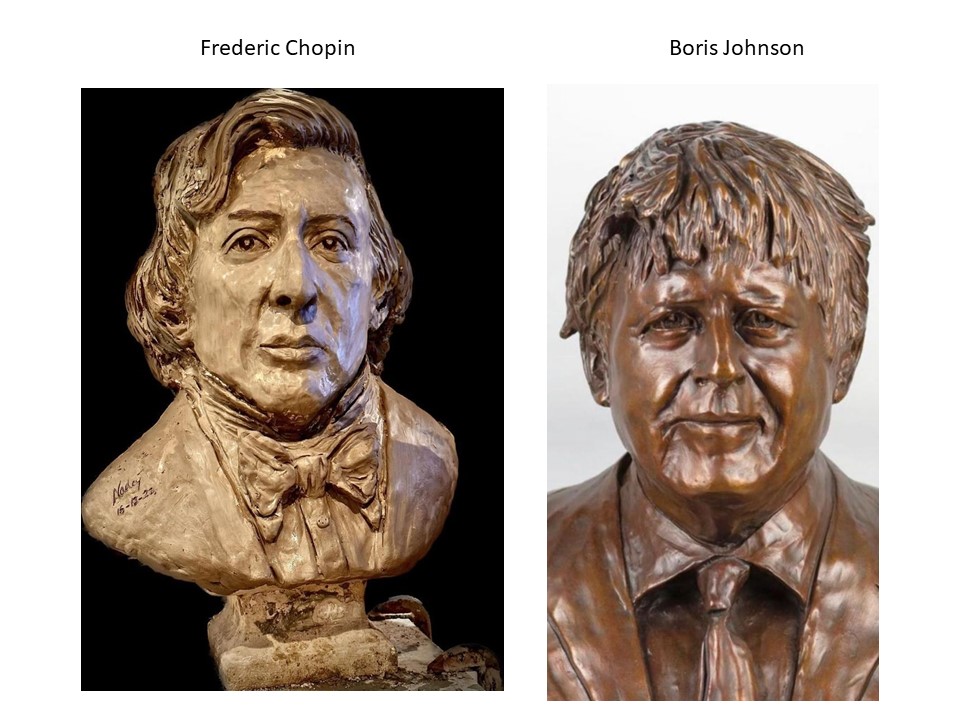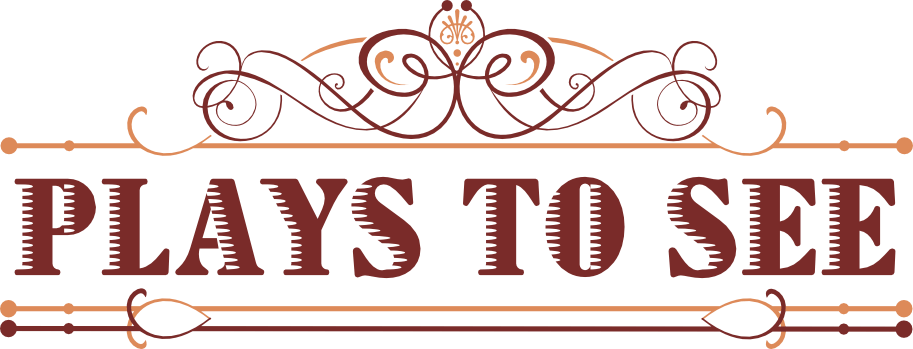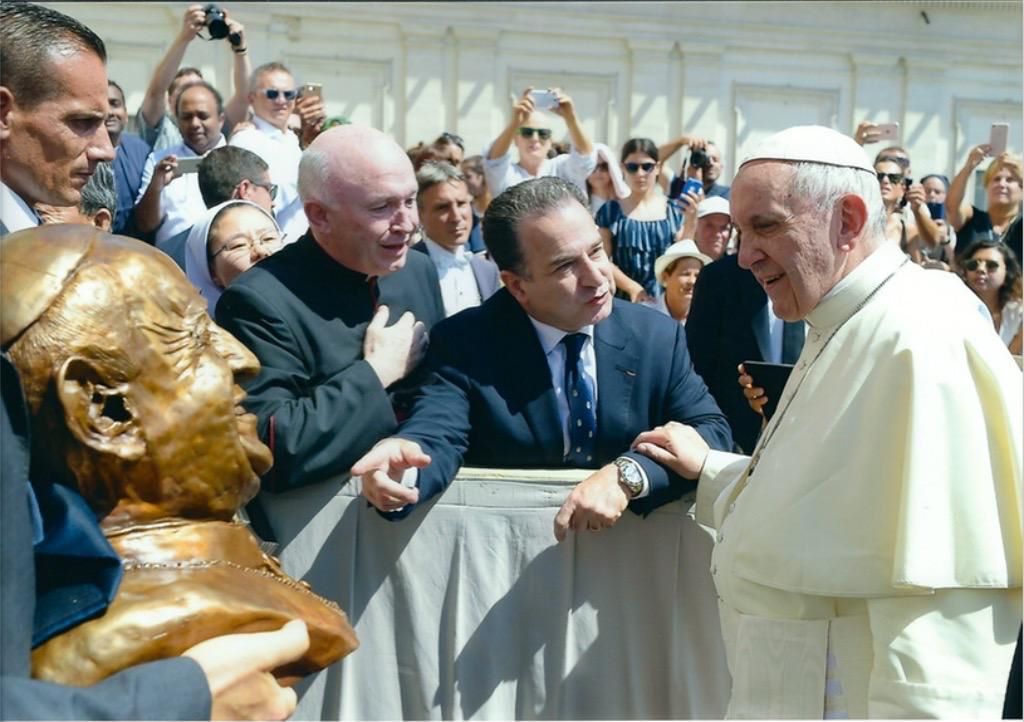Operating Theatre and Performing Arts Theatre seem world apart, so I thought until I met two prominent medical professors, in two different countries. Apart from their professional excellence each of them indulges in performances. I have conducted two short interviews with each of these amazing individuals – Nadey Hakim, a British transplant surgeon with roots in Beirut, Lebanon who is also a superb clarinet player as well as a sculptor. The other with Professor Yosef Shemesh, an Israeli Cardiologist, born in Iraq, who is also a stand-up comedian. My interview with him will be published before the end January 2023.
The two medical professors, devoted to their profession, yet go beyond the four walls of the operating theatre and find the muse in the performing arts.
Professor Nadey Hakim in conversation with Rivka Jacobson
Professor Hakim greeted me with a cup of expresso and a broad warm smile. The walls of his large private room in Harley Street, are crowded with certificates, photos and busts he moulded.
He is charming, lively, and full of enthusiasm. When not operating or seeing patients, he either plays the clarinet or enthusiastically sculptures busts of world-famous figures from Pope Francis to Her late Majesty the Queen.

Prof Hakim pioneered Pancreas Transplantation for the cure of Diabetes. He performed the first Pancreas Transplant in London at St Mary’s Hospital in 1995. Apart from his outstanding professional accomplishments, he is proud of amazing achievements in music and sculpting.
He plays the clarinet for pleasure but he is constantly strive to perfect his skills as a clarinet player and he happily performs in concerts that help sustain the driving momentum of perfecting his clarinet playing.

To understand and appreciate the energy and the drive behind his accomplishments, I asked him to tell me something about his background.
‘Music was always at home. My father played the mandolin and sang. My mother played the piano. She was not a professional pianist, but she loves playing the piano. With a spark of delight, he adds ‘She still plays the piano. She’s 94 and she plays the piano very well.’ He has a video of the much loved and admired mother that with the late father (died 2022), secured music lessons to all four kids musing them with concerts and domestic performances ‘my father would play the mandolin and sing, and we would accompany him. It was mostly improvised ensemble. We made up the music as we went along. Just for fun.’
’Every one of us played a different instrument’ he explains ‘the reason why I opted for the clarinet is because we were four children. My older brother, Naji, who was the most gifted of us all, and who eventually became quite a prominent organist initially dominated the piano, my other brother played the trumpet and my twin sister, played the guitar. There was a lot of music at home. It was a very happy home.’ He reflects. Today only Naji, the professional Organist and composer, and Nadey, persist with their devotion to music. One as a professional and other as an enthusiastic amateur.
Hakim is attached to his clarinet. The very same instrument his father bought for him ‘when I was age of 10 or 11 when I started learning to play the clarinet. We are now talking of almost 54 years ago.’ he says with a smile. ‘When I give concerts, when I play is on the same one my late father, has bought me. This French Leblanc clarinet is very precious to me. It is not only of very good quality, but also it was given to me by my father who was a role model for me’.
‘I play regularly. And the reason why I decided over the years to do recordings, is to force myself to play and to be prepared for the recording, to be prepared every time for the next CD.
Usually, I record in the summer and the producer of the CDs gives me a deadline. That gives a target date and a motivation to perfect the pieces. That forces self-discipline which I need to generate in between responsible and demanding work.’
Prof Hakim occasionally performs in concerts. Giving a live performance is more daunting than recording. He explains ‘Live music is completely different from recordings. Recordings, you know, you can take your time, you can correct this and that, but when you play live, you give all yourself to that 5, 6 or 7 minutes, you’re playing the Concerto’
Recently, in fact on 6 November 2022, he gave a solo concert in the magnificent Great Hall of St Bartholomew Hospital, London.
‘I was happy and honoured to be asked to perform with an orchestra I never met before, and therefore we never practiced together! I knew the conductor Prof John Lumley because he’s a surgeon himself, but that’s it. So, I landed there at, exactly 10.30, picked up the clarinet and we played. That’s it. No rehearsal. My apprehension was overcome very quickly as soon as the concert started. It was all about playing the music. The whole performance was magic. There were two minor mistakes which I doubt any member of the audience have noticed.’
In contemplative voice he says ‘playing Mozart’s Clarinet Concerto, a piece of music that was written in 1791, just over 231 years ago, and here we are still playing that Concerto. I am driven by the thought that we ought to leave something behind after we have gone. You need to do is something which will be there long after you’re gone. This is how I summarize my daily activities. I always do things which I know will be there for many more years to come after I’ve gone. That’s how I look at it’
Anything else you do to enrich the legacy you leave behind?
‘Twenty-five years ago, I woke up decided to immortalize my father. So, I went to an art school in Hampstead. Meeting with a teacher of art sculpting I explained I want to learn how to sculpt. He said, yes, why? I said, you know, I really want to do the sculpture of my father, to immortalize my father. ‘
He smiles with almost disbelief ‘That was 25 years ago. I did the first sculpture from a live model, and now I must have done at least 200 heads I built a series of sculptures of well-known people such as the Queen. My sculpture of Her late Majesty the Queen was done in 2000 and it is exhibited at Buckingham Palace. ‘

Do your models sit for you or is it from photos?
‘Many from photos. The Queen liked so much the one I gifted to her that she had it placed in the Royal Trust collection. And more recently, two months before she died, I was commissioned another copy of her more recent looks, which I completed. It will be sitting at the headquarters of the Commonwealth of Nations, which is in Marlborough House (built 1711). I’ve done busts of well-known world leaders from Pope Francis to Nobel Prize winner (1996) in chemistry Sir Harry Kroto from Bolton, UK, to politicians including all recent British Prime Ministers.
Which of the 200 busts/sculptures you crafted is your favourite?
Prof Hakim does not hesitate and says ‘DAVID’. It is the head of David based on Michelangelo’s masterpiece sculpture David (1501-1504), which is in Galleria dell ‘Accademia di Firenze, or “Gallery of the Academy of Florence.

‘I approached the Leonardo DaVinci Institute in Florence. I said I want to reproduce the head of David. They agreed on it to give me the space to work. It took me five days in the gallery. I completed the head of David in five working days. It is of the same scale of 150 centimetre. diameter. the same size as the one in Florence, 150 centimetres. And the Italians loved it so much that it is on display in Piero della Francesca Museum in Florence.
What an extraordinary energy and passion for creativity, this amazing individual has, I thought on my way out, leaving the room for the patient in the waiting room.

